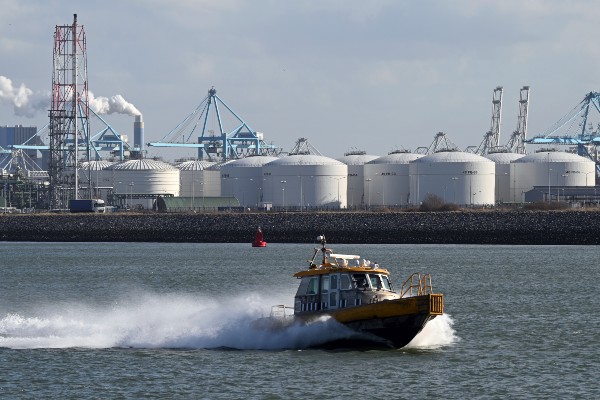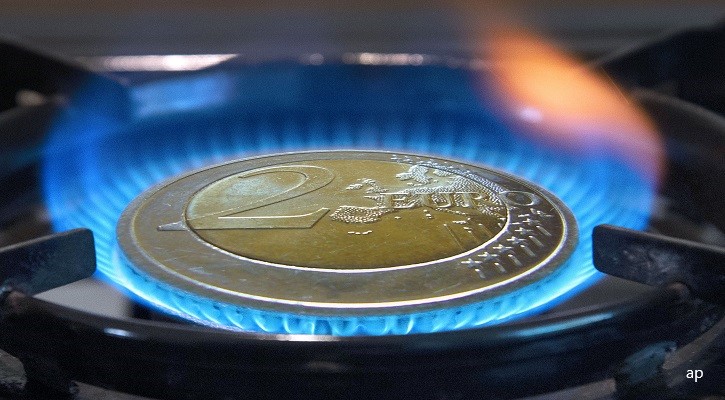
Russia's gamble to weaponise energy exports in a bid to end Western support for Ukraine has blown up in its face. In a scramble for new suppliers, European countries pushed Russia's share of their gas supplies from about 45% to less than 10%, while filling up storage facilities ahead of schedule. Their commitment to Ukraine's war effort is as strong as ever, while Russia has expended its single greatest economic weapon.
All this is good news, but don't bring out the champagne quite yet. It would be a mistake to conclude that European industries and households are ready to coast through this winter on stored gas, or that the energy market is about to return to pre-crisis price levels.
Do we Have Enough?
Storage levels play a key role, so much so that an EU regulation obliges the 27 member states to fill their gas storage facilities to at least 80% by 1 November. This seems to have been largely achieved, as our interactive map shows. On an aggregate level, EU countries have their storage facilities 88% full.
"Norway is now our biggest gas supplier," European Commission spokesman Tim McPhie said in a 19 September press briefing, adding that "the US has filled part of this gap by already going above the level set in the EU-US bilateral agreement on LNG supply" and that the EU "has worked with a number of partners including Azerbaijan, Algeria, as well as having concluded a trilateral agreement with Israel and Egypt".
In short, thanks to efforts at member state level, there has been a significant increase in supplies from different producers.
The Storage Fallacy
All that stored gas doesn't mean European radiators and smelters will stay hot through the winter though.
"Storage is for peak supply, not for everyday use", explains Massimo Nicolazzi, professor of economics of energy sources at the University of Turin.
"Our maximum storage capacity covers less than half of our winter consumption, and the effective use of reserves also depends on pipeline pressure; as it empties, in fact, the storage reservoir delivers less and less gas because the pressure decreases, which is why at certain times of the year – typically in March – it is more difficult to draw from it.”
In short, we cannot imagine spending the winter in peace because we have our storages 100% full – it doesn’t work that way.
Is The Price Cap Battle Really Worth it?
The last European Energy Council in September was a let-down. EU energy ministers approved a package of "emergency measures" that is unlikely to have much impact.
They included a cap on extra revenues set at EUR180/MWh for nuclear or renewables, a 33% tax on fossil fuel producers, and an enforced 5% reduction in electricity demand.
"The energy crisis is serious and it requires a common response from Europe, we must do more", European Commission President Ursula von der Leyen declared following the Energy Council. Such a common response has been slow to materialise, with Northern European countries, and especially Germany, still opposed to a cap on the price of gas imports.
Instead, Berlin has allocated a EUR200 billion fund to help German citizens and industries, opting to pay more for supplies without risking damage to its energy-intensive economy. The measure could well be effective, but runs counter to the vision of a united European response, while also potentially constituting illegitimate state aid under European competition law.
"The limitation of the price cap is that, assuming the legitimacy of such a choice especially on existing contracts, it could only be applied via pipeline, but certainly not to the liquefied natural gas (LNG) market, all of which would go immediately to Asia," comments Professor Nicolazzi.
Beyond The TTF
In a non-public document, the EU Commission stated its willingness to create a new transaction-based benchmark for LNG, as declining flows from Russian pipelines and a record increase in LNG imports have created imbalances in the current pricing mechanism, now represented by the Title Transfer Facility, or TTF.
This alternative LNG price benchmark – which market players could use voluntarily – should be based on verifiable assessments of LNG cargo delivery prices to ensure that it reflects real fuel prices.
On Tuesday, Italy's Minister for Ecological Transition Roberto Cingolani promoted that idea to Italian media, suggesting "indexing the price of gas by linking it to Stock Exchanges that are more stable than the TTF, which has nothing to do with the real situation and the mechanisms of supply and demand", and that the "time has come for a European index that is more truthful".
No Way Around Rationing
It will probably take months before an alternative to TTF becomes reality. For now, Europe's only prospect of having extra gas quotas in a hurry is to cut consumption. Several European countries have already presented national plans to curb energy consumption.
So, will we spend the winter in the cold? "It is difficult to say, certainly the 'hardness' of the winter depends on many factors," says Nicolazzi.
"As far as technically possible, now that Nord Stream is out of service, we need the Russian flow to continue; then, let’s hope for a winter that's not too cold, for there to be wind in the North Sea, and for French nuclear power to return to 100% of its capacity in January, compared to the current 50%."
"The only thing that is certain is that a rationing plan is indispensable," Nicolazzi continues, "and people must know this, they must be ready in case it has to be implemented. Overly optimistic signals are politically wrong. At this time, energy efficiency and energy saving should be the mantra for those in charge."
"The real, tragic risk is that rationing may become 'unintentional'," warns the professor, "for every industry that shuts down, in fact, demand for energy decreases."
Three Years to Get Out
According to an analysis by Goldman Sachs released in early September, the price of European gas is expected to cool significantly in the coming months.
The American investment bank expects the price to fall below EUR100 per MWh by the first quarter of 2023 – thanks to full storage facilities – before rising again during the summer when they will have to be refilled.
According to Goldman’s analysts, European storage facilities will remain more than 20% full by the end of March next year. This could set the stage for a sense of market relief at having weathered the winter, gradually displacing the current sense of urgency to destroy demand.
"Most likely, we will still be short of gas next year, more or less in the same situation as today, so I don't think prices will be much lower," Nicolazzi reasons.
"Winter 2024-25 will be better because we will have more supply capacity already available, but we will not be totally out of it. The following year, on the other hand, we may finally return to a 'long market' situation. Of course, it all depends on demand side."









.jpg)



















